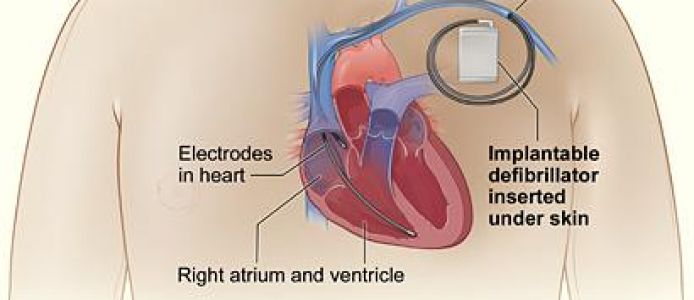ICD Full Form | What is Implantable Cardioverter-Defibrillator (ICD)
What is the full form of ICD?
ICD: Implantable Cardioverter-Defibrillator (ICD)
ICD stands for Implantable cardiovascular-defibrillator. It is a battery-operated device that tracks the heartbeat. It is placed under the skin and is connected with the heart through wires. This device is designed to detect the abnormal heartbeats and to deliver an electric shock to restore the normal heartbeat.
Implantable cardiovascular-defibrillatorImplantable cardiovascular-defibrillator
This device is surgically placed under your skin below the left collarbone of a person. It continuously monitors your heartbeat and delivers an electric shock through wires connected to the heart through your veins. This device helps prevent sudden death due to sustained ventricular tachycardia or fibrillation.
ICD is required if a person's suffering from ventricular tachycardia (fast heartbeat) or a chaotic heartbeat that indicates ventricular fibrillation in which the heart is not able to supply enough blood to different parts of the body.
ventricular tachycardiaventricular tachycardiaventricular fibrillationventricular fibrillationYou may have seen doctors in hospitals giving electric shocks to an unconscious person using electric paddles. The ICD performs the same function but internally and automatically when it detects an abnormal heartbeat. However, it is different from a pacemaker, which is also a device that helps control the abnormal heartbeat.
Parts of an ICD:
- Battery and Electric Circuit: It reads the electrical activity of your heart.
- Electrodes: These are wires that are known as leads. These wires pass through the veins and reach the heart. An ICD can have 1, 2 or 3 electrodes.
- Pacemaker: Most of the ICDs also contains a pacemaker that is required to pace the heart if it beats too slow or fast or if a person gets a shock from the ICD.
How an ICD works?
During rapid or abnormal heartbeat the wires that are attached to heart send signals to the ICD. The ICD on receiving the signals generates and sends electrical pulses to regulate the heartbeat. However, a subcutaneous ICD has one lead that is placed in the tissue to the left of the breastbone instead of the heart.
Why ICD needed?
Doctor may recommend ICD if someone is at risk of life-threatening abnormal heartbeat due to one of the following reasons:
- The person had a ventricular arrhythmia
- Had a heart attack
- Had a cardiac arrest
- Brugada syndrome
- Long QT syndrome
- Congenital heart disease
How is ICD implanted?
It is inserted in the chest area below your collarbone after this area is numbed with anesthesia and incision is made to create space to place the ICD. Electrodes are placed in the veins and into the heart. A special x-ray is used to see inside your chest while performing this procedure. The electrodes are connected to the pulse generator.